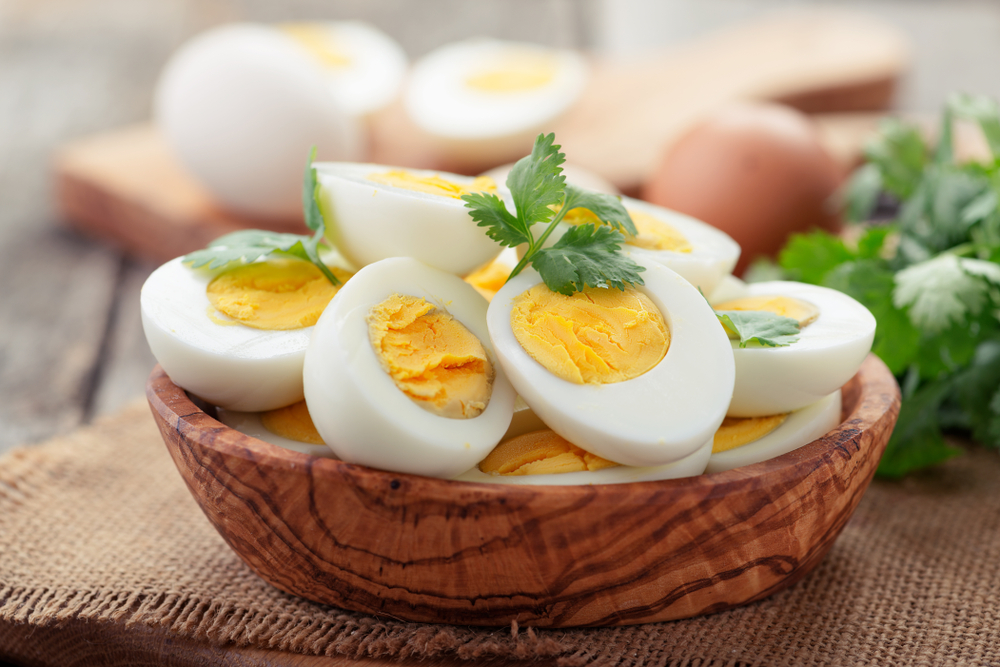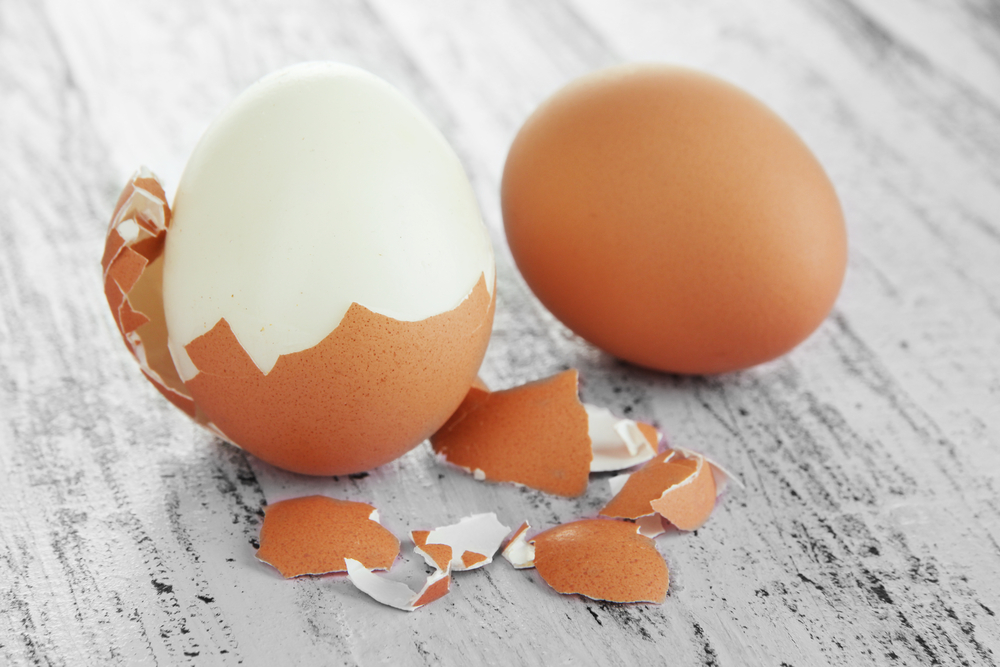Reheating egg casserole may seem like a daunting task, but it doesn’t have to be. Whether you’re looking to reheat leftover breakfast casserole or want to prepare it ahead of time for a quick and easy meal, there are several effective methods to choose from.
In this article, I will share with you some tips and tricks for reheating egg casserole to help you achieve the perfect result every time.
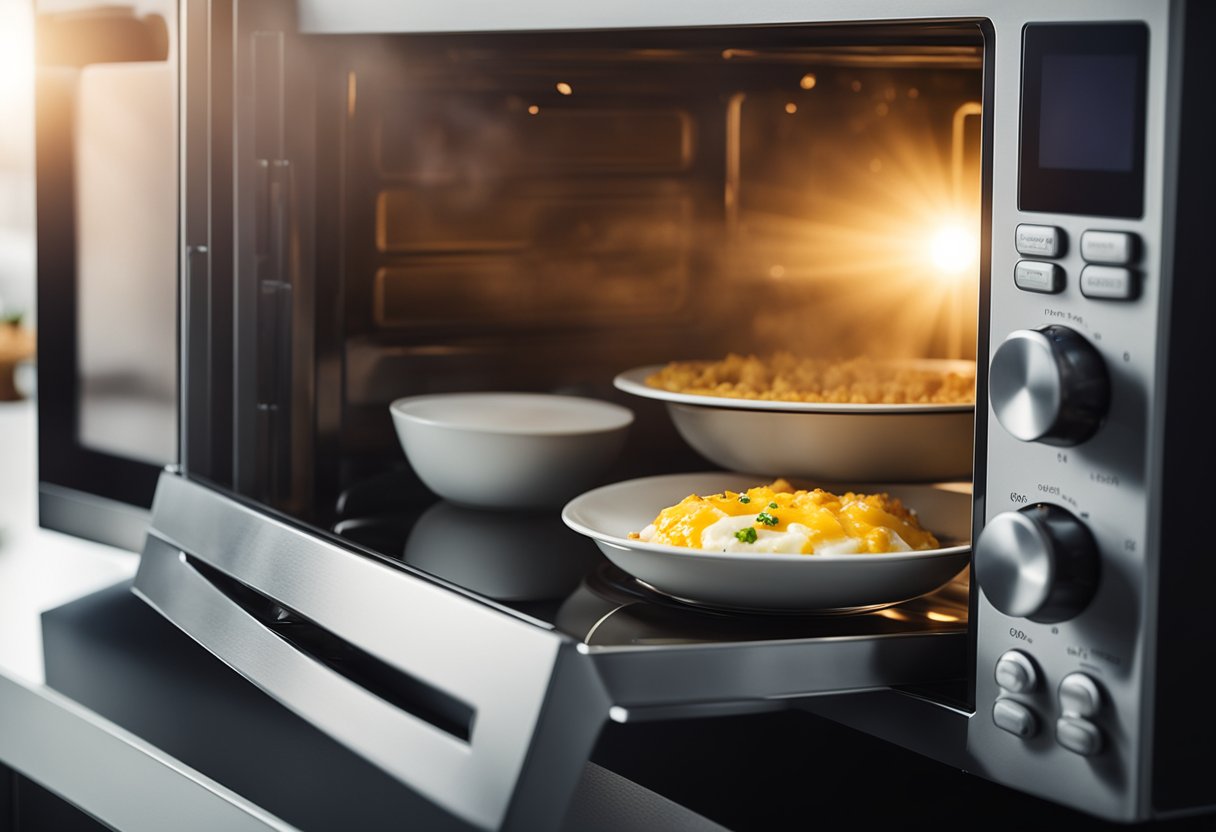
Before we dive into the reheating process, it’s important to understand what egg casserole is and how it’s made. Egg casserole is a dish that typically consists of eggs, cheese, vegetables, and sometimes meat.
It’s a versatile dish that can be enjoyed for breakfast, lunch, or dinner and can be customized to suit your taste preferences.
Understanding the ingredients and how they interact with each other is key to successfully reheating egg casserole. Now, let’s get started with some pre-reheating preparation tips.
Key Takeaways
- Egg casserole is a versatile dish that can be enjoyed for any meal.
- Understanding the ingredients and how they interact with each other is key to successfully reheating egg casserole.
- Pre-reheating preparation is crucial for achieving the perfect result.
Understanding Egg Casserole
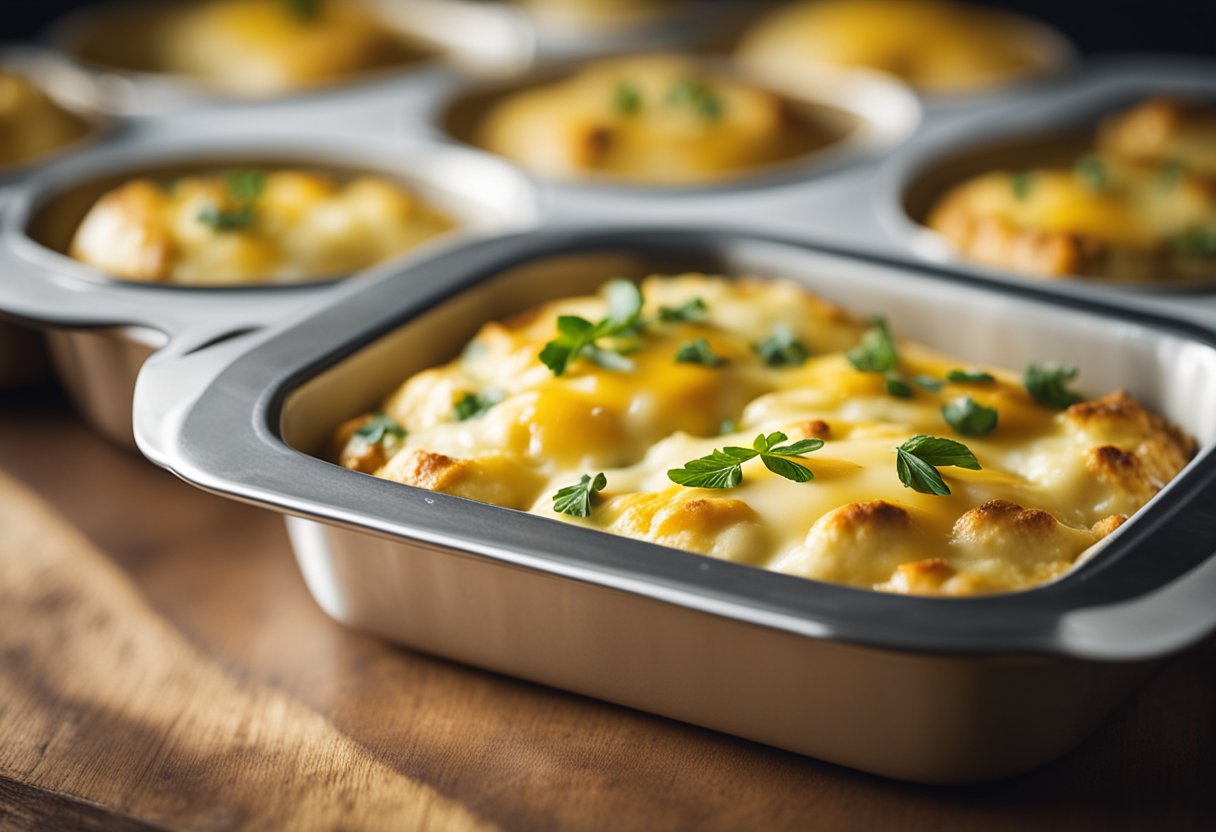
Egg casserole is a delicious and nutritious dish that is perfect for breakfast, brunch, or even dinner. It is typically made with a combination of eggs, cheese, milk, and a variety of other ingredients such as vegetables, bacon, onion, peppers, and potatoes.
Components of Egg Casserole
Eggs are the main ingredient in egg casserole and provide the protein that is essential for building and repairing tissues in the body.
Cheese is another important component of egg casserole as it adds flavor and texture to the dish. Milk is used to make the egg mixture more creamy and moist.
Vegetables such as onion, peppers, and potatoes are often added to egg casserole to provide additional flavor and texture. Bacon is also a popular ingredient in egg casserole as it adds a salty and savory flavor to the dish.
Importance of Proper Reheating
Proper reheating is important when it comes to egg casserole as it can affect the flavor, texture, and moisture of the dish.
Reheating egg casserole incorrectly can cause it to become dry and rubbery, which can ruin the overall taste of the dish.
To ensure that egg casserole is reheated properly, it is important to use the right method and temperature.
The oven method is the most recommended method for reheating egg casserole as it ensures even heating and minimizes the risk of overcooking.
It is important to preheat the oven to around 350°F (175°C) to ensure proper heating throughout without drying out the casserole. Covering the casserole with foil during reheating can also help to retain moisture.
In conclusion, egg casserole is a delicious and nutritious dish that can be enjoyed at any time of the day.
To ensure that it is reheated properly, it is important to use the right method and temperature. Proper reheating can help to maintain the flavor, texture, and moisture of the dish, ensuring that it remains delicious and enjoyable.
Pre-Reheating Preparation
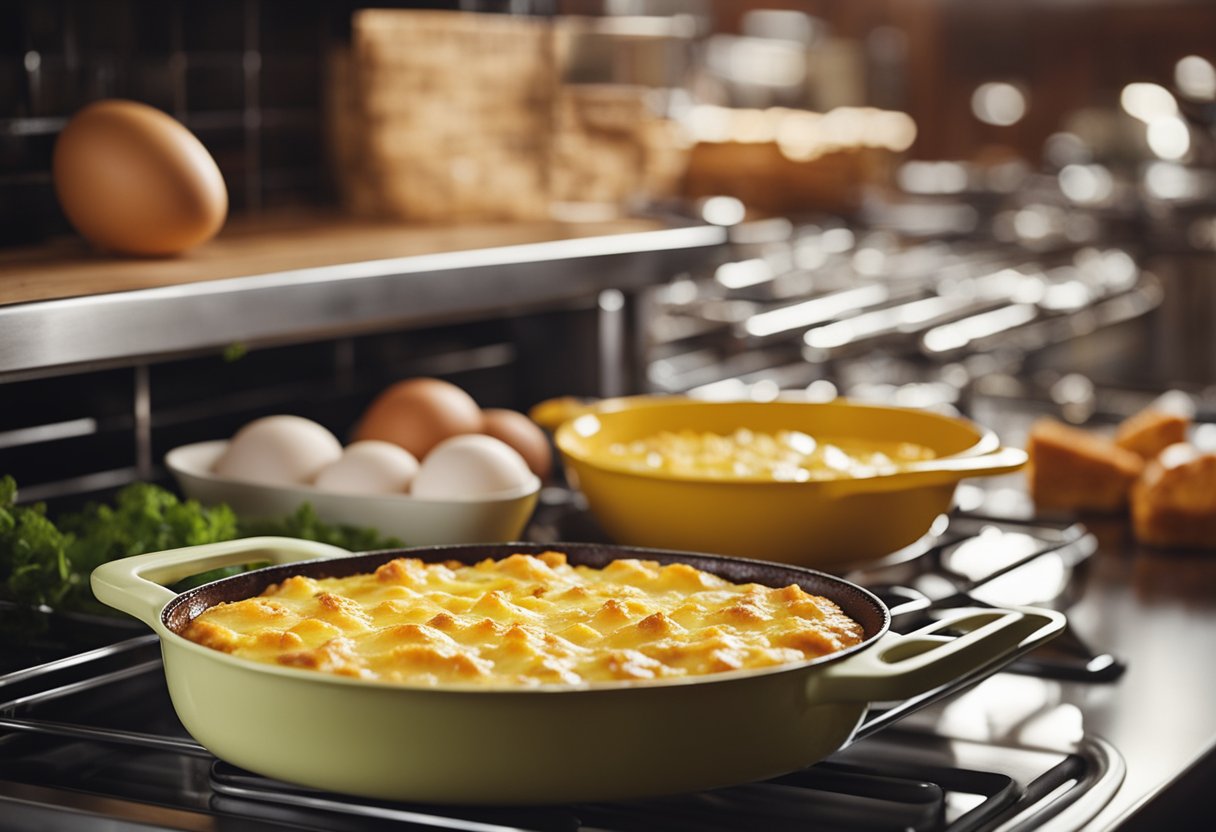
Before reheating your egg casserole, there are a few things you need to do to ensure that it retains its flavor and texture.
Here are the steps I follow to prepare my casserole for reheating:
Thawing Frozen Casserole
If your egg casserole is frozen, the first step is to thaw it properly. The best way to do this is to transfer it from the freezer to the refrigerator and let it thaw overnight.
This slow thawing process ensures that the casserole thaws evenly, and it also prevents bacterial growth.
It’s important to note that you should never thaw your casserole at room temperature or in the microwave.
Thawing at room temperature can cause the casserole to become unsafe to eat, and using the microwave can result in uneven thawing and overcooking.
Prepping Refrigerated Casserole
If your egg casserole is already in the refrigerator, you can skip the thawing step. However, before reheating, you need to make sure that the casserole is properly covered to prevent it from drying out.
I recommend using either plastic wrap or foil to cover the casserole. Make sure that the wrap or foil is tightly sealed around the edges to prevent any air from getting in. This will help to keep the casserole moist and prevent it from developing a rubbery texture.
It’s also important to note that you should remove any plastic wrap or foil before reheating the casserole. Leaving the wrap or foil on can cause the casserole to overcook and become dry.
By following these pre-reheating preparation steps, you can ensure that your egg casserole retains its flavor and texture when reheated.
Reheating in the Oven
Oven Reheating Method
When it comes to reheating egg casserole, the oven is an excellent option. It is especially useful when you want to reheat a larger quantity of casserole.
Here’s how to do it:
- Preheat your oven to 350°F (175°C) while ensuring its racks are positioned correctly for even heating.
- Take out your desired portion of cold egg casserole from the refrigerator and transfer it into an oven-safe dish.
- If desired, sprinkle a small amount of water or broth over the top of the casserole before covering it loosely with aluminum foil.
- Place the dish in the preheated oven and reheat for about 15-20 minutes, or until it is heated through.
Ensuring Even Heating
To ensure that your egg casserole is evenly heated, here are some tips:
- Cut your refrigerated egg casserole into smaller portions for easier handling and even heating.
- Avoid overcrowding the dish, as it can lead to uneven heating.
- Use oven mitts or potholders to remove the dish from the oven and check the internal temperature with a food thermometer. The internal temperature should reach 165°F (74°C) to ensure that it is safe to eat.
- If the casserole is not heated through, return it to the oven for a few more minutes until it reaches the desired temperature.
Reheating egg casserole in the oven is a simple and effective way to enjoy this delicious dish. By following these tips, you can ensure that your casserole is evenly heated and safe to eat.
Reheating on the Stovetop
When it comes to reheating egg casserole, the stovetop can be a great option. It’s quick and easy, and can help you maintain the integrity of your casserole. Here are a few tips to help you get the best results.
Skillet Reheating Technique
One way to reheat egg casserole on the stovetop is to use a skillet. To do this, start by heating a skillet over medium heat.
Once the skillet is hot, add your egg casserole and cook for a few minutes on each side. Use a spatula to carefully flip the casserole so that it heats evenly on both sides.
Maintaining Casserole Integrity
To maintain the integrity of your casserole, it’s important to be gentle when handling it. Use a spatula to carefully flip the casserole, and avoid breaking it apart.
If you need to add any fresh herbs or other ingredients, do so after the casserole has been reheated. This will help to ensure that the casserole stays intact and doesn’t fall apart during the reheating process.
Safety is also important when reheating egg casserole on the stovetop. Be sure to use a skillet that is large enough to hold your casserole, and use caution when flipping it. Keep a close eye on the skillet to ensure that the casserole doesn’t burn or overcook.
Overall, reheating egg casserole on the stovetop can be a great option if you’re short on time. By following these tips, you can help ensure that your casserole stays intact and heats evenly.
Microwave Reheating Tips
When it comes to reheating egg casserole, the microwave is one of the quickest and easiest methods. Here are some tips to ensure that your reheated egg casserole comes out perfectly.
Quick Microwave Method
If you’re in a hurry and need to reheat your egg casserole quickly, follow these steps:
- Portion your egg casserole into smaller portions for easier reheating and more even cooking.
- Place one portion (or multiple portions) of your egg casserole into a microwave-safe container with a lid.
- Heat the egg casserole in the microwave on high for 1-2 minutes or until it is heated through.
- Check the temperature of the egg casserole with a food thermometer to ensure that it has reached an internal temperature of 165°F (74°C).
Avoiding Sogginess
One of the biggest challenges when reheating egg casserole in the microwave is avoiding sogginess. Here are some tips to help you avoid this problem:
- Add a small amount of liquid to the egg casserole before reheating. This can help to keep the casserole moist and prevent it from drying out.
- Cover the egg casserole with plastic wrap or a microwave-safe lid to trap in moisture and prevent it from evaporating.
- Avoid overcooking the egg casserole, as this can cause it to become dry and rubbery.
By following these tips, you can ensure that your reheated egg casserole is moist, flavorful, and perfectly cooked.
Frequently Asked Questions
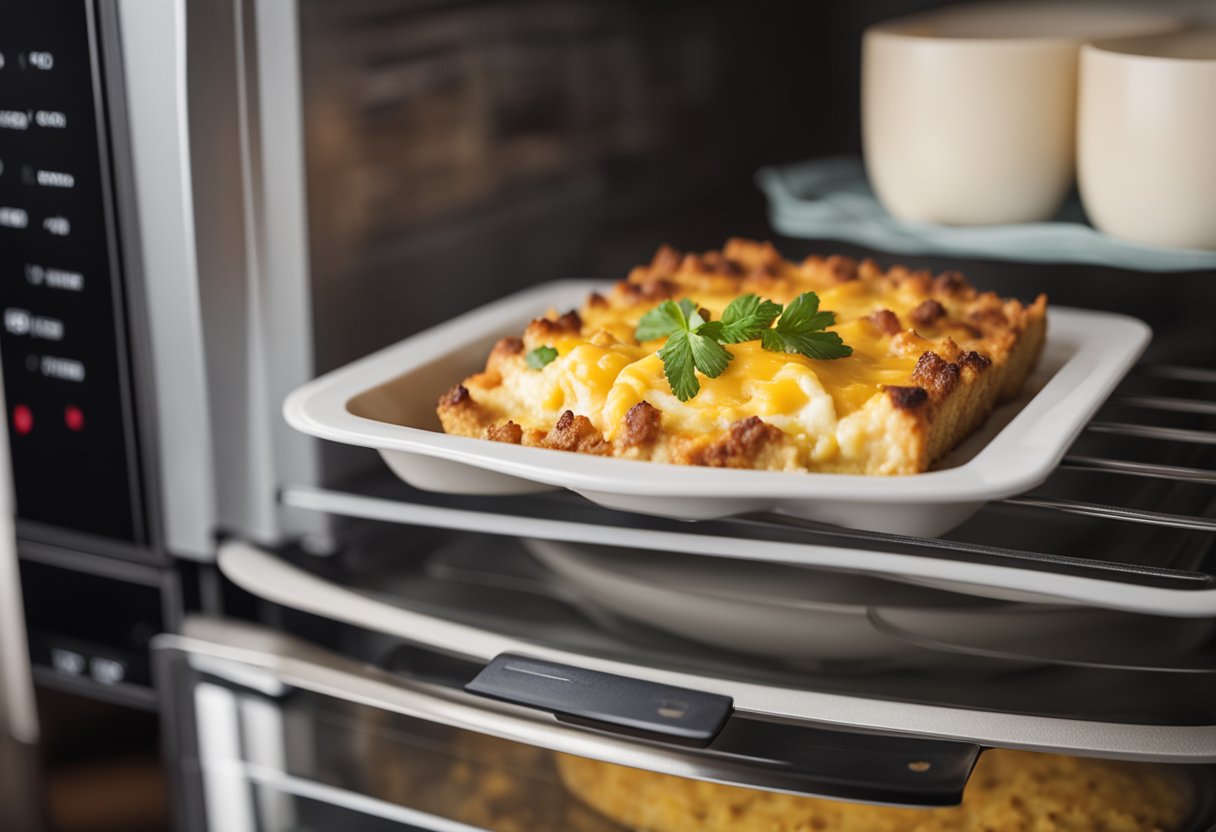
What is the ideal temperature for reheating a breakfast casserole in the oven?
The ideal temperature for reheating a breakfast casserole in the oven is 350°F (175°C). This temperature is high enough to ensure that the casserole is heated throughout without drying it out.
Can you reheat an egg casserole in the microwave, and if so, how?
Yes, you can reheat an egg casserole in the microwave. However, reheating in the microwave is a bit risky as it can cause the casserole to become rubbery.
To reheat an egg casserole in the microwave, place it in a microwave-safe dish and cover it with a damp paper towel. Microwave on high for 30 seconds at a time, checking the temperature after each interval until it is heated through.
What’s the best way to reheat a casserole from the fridge to maintain its moisture?
The best way to reheat a casserole from the fridge to maintain its moisture is to use the oven method. Preheat your oven to 350°F (175°C). Take out your refrigerated egg casserole and let it sit at room temperature for about 10-15 minutes.
Then, transfer the casserole to an oven-safe dish, cover it with foil, and bake for 20-25 minutes or until heated through.
How long should a frozen egg casserole be reheated, and at what temperature?
If you have a frozen egg casserole, you should thaw it in the refrigerator overnight before reheating it. Once thawed, preheat your oven to 350°F (175°C). Transfer the casserole to an oven-safe dish, cover it with foil, and bake for 45-50 minutes or until heated through.
Should you cover an egg casserole when reheating it in the oven?
Yes, you should cover an egg casserole when reheating it in the oven. Covering the casserole with foil will help prevent it from drying out and ensure that it heats evenly.
How long can you safely store leftover egg casserole before reheating?
You can safely store leftover egg casserole in the refrigerator for up to 4 days before reheating. If you have leftover casserole that you don’t plan to eat within 4 days, you can freeze it for up to 2 months.





